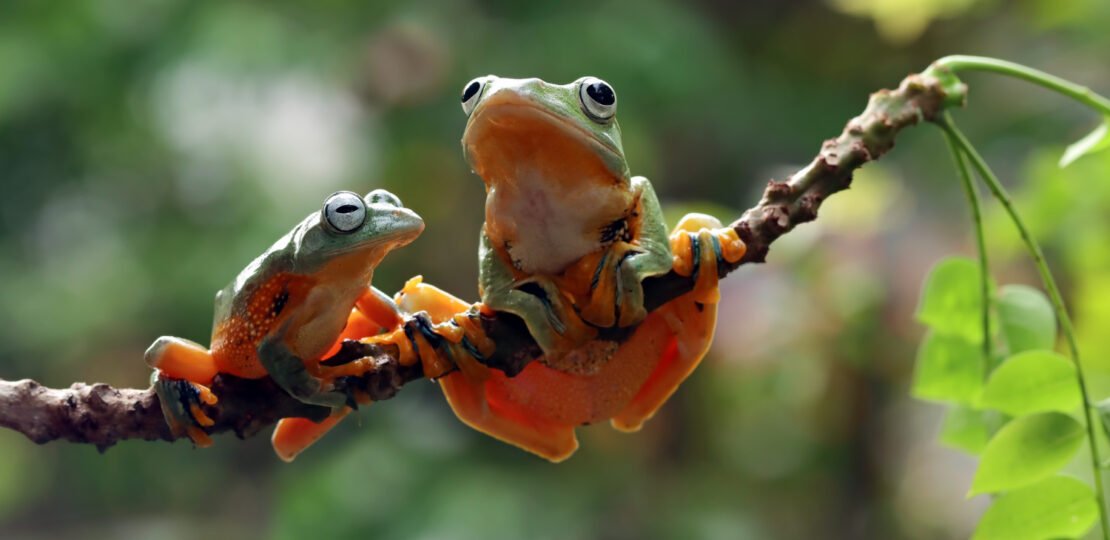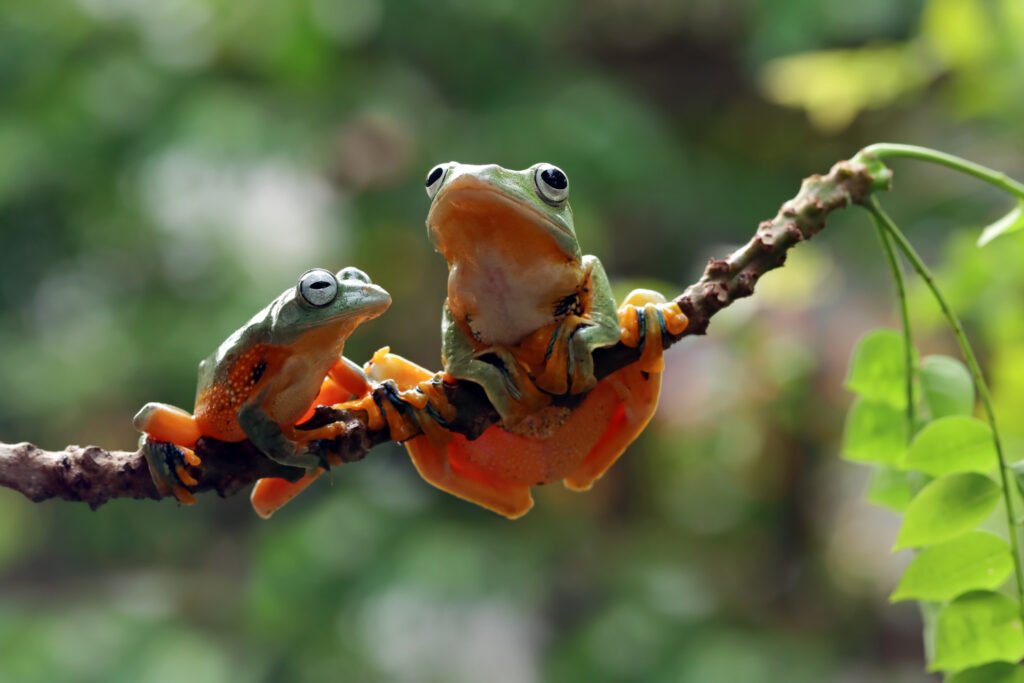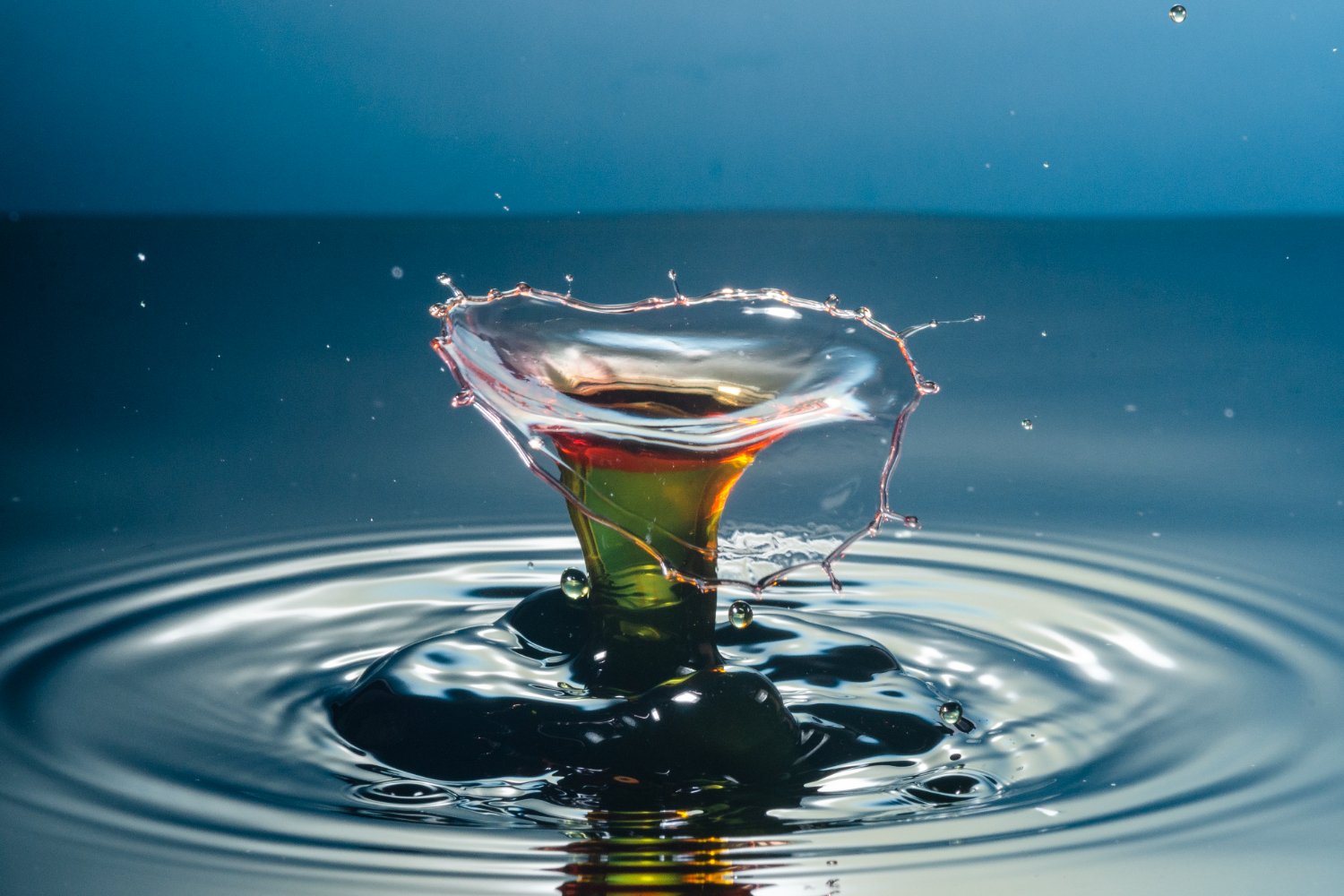A Comprehensive Guide to Amphibians: Fascinating Creatures of Land and Water
November 10, 2024 | by usmandar091@gmail.com

Amphibians are a unique group of animals that bridge the gap between aquatic and terrestrial life. These creatures are primarily characterized by their ability to live both in water and on land at various stages of their life. Amphibians are incredibly diverse, with over 8,000 known species, and include frogs, toads, newts, salamanders, and caecilians. They can be found on every continent except Antarctica, living in a range of habitats from forests and grasslands to wetlands and swamps. This article delves into the world of amphibians, exploring their behavior, characteristics, types, habitat, life cycle, care needs, and common species found in the pet trade.

1. Introduction to Amphibians
Table of Contents
Amphibians belong to the class Amphibia, which means “double life.” This class includes a wide range of creatures, all of which are cold-blooded and undergo metamorphosis during their life cycle. Unlike reptiles and mammals, amphibians have permeable skin, which allows them to absorb water and oxygen directly from their surroundings. This skin must remain moist to enable proper respiration, which is why amphibians are typically found in moist environments.
Amphibians are divided into three main orders:
- Anura: This order includes frogs and toads, which are known for their jumping ability and distinctive calls.
- Caudata (Urodela): This order includes salamanders and newts, which typically have long bodies and tails.
- Gymnophiona (Apoda): This order includes caecilians, which are legless, worm-like creatures found in tropical regions.
2. Physical Characteristics of Amphibians
Amphibians exhibit a range of physical characteristics that help them survive in both aquatic and terrestrial environments. Some of these characteristics include:
2.1 Moist, Permeable Skin
The skin of amphibians is one of their most distinctive features. It is thin, moist, and permeable, allowing for gas exchange (oxygen and carbon dioxide) as well as water absorption. Amphibians do not have scales, and their skin must remain moist for them to breathe effectively. This is why they are often found in humid environments or near water sources.
2.2 Metamorphosis
Amphibians undergo metamorphosis, a process in which they transition from an aquatic larval stage to a terrestrial adult stage. This process varies among species, but it typically involves a dramatic transformation. For example, a frog starts its life as an egg, then hatches into a tadpole (larval stage) with gills and a tail. Over time, it grows legs, loses its tail, and develops lungs, transitioning into an adult frog capable of living on land.
2.3 Cold-Blooded Nature
Amphibians are ectothermic, meaning they rely on external heat sources to regulate their body temperature. Unlike mammals and birds, which can generate their own heat, amphibians must adjust their behavior and seek out warmer or cooler environments to maintain a suitable body temperature. This is one reason why amphibians are often found in temperate or tropical regions.
2.4 Eyes and Ears
Amphibians typically have large, well-developed eyes that allow them to see in low-light conditions, which is especially useful for nocturnal species. Some amphibians, like frogs, have specialized eardrums (tympanic membranes) located behind their eyes that help them hear vocalizations and environmental sounds.
3. Amphibian Behavior and Habitat
Amphibians are highly adaptable creatures and exhibit a wide range of behaviors depending on their species, environment, and lifestyle. They are often nocturnal, active at night when it is cooler and humidity is higher. Many amphibians are also territorial, especially during the breeding season. Vocalizations play an important role in attracting mates and establishing territory.
3.1 Terrestrial and Aquatic Environments
While amphibians live both on land and in water, different species have varying degrees of dependency on each environment. For example, frogs and toads typically live in or near freshwater, while salamanders and newts may be fully aquatic or semi-terrestrial.
- Aquatic Amphibians: Many amphibians, such as frogs in their tadpole stage, are aquatic for most or all of their lives. They often reside in ponds, lakes, and marshes, where they can access water for breathing (via gills or skin) and reproduction.
- Terrestrial Amphibians: Some amphibians, such as certain species of salamanders and toads, spend much of their lives on land, only returning to water to breed. These amphibians tend to live in moist, cool environments, such as forests, caves, and wetlands.
3.2 Diet and Feeding
Amphibians are carnivorous at all stages of life (with some exceptions), and their diet consists primarily of insects, small invertebrates, and other small animals. Some amphibians, like larger frogs and salamanders, may even eat small fish or other amphibians. The method of catching food varies: frogs typically use their sticky, extendable tongues to catch prey, while salamanders use their quick reflexes to grab food with their jaws.
4. Life Cycle of Amphibians
The life cycle of amphibians is fascinating and varies depending on the species, but it generally follows these stages:
- Egg Stage: Amphibians lay eggs in water, which are often coated in a jelly-like substance for protection. The eggs may hatch into larvae or tadpoles, depending on the species.
- Larval Stage (Tadpole): In this stage, amphibians like frogs have gills and tails, and they live entirely in water. They feed on algae and other small organisms. During this stage, amphibians are highly dependent on water for respiration and survival.
- Metamorphosis: As the larvae mature, they undergo a significant transformation, developing legs and losing their tails. Their respiratory system changes from gills to lungs, and they begin to transition from aquatic to terrestrial life.
- Adult Stage: Once the amphibian reaches adulthood, it is capable of living on land, although it may still return to water for breeding. In this stage, amphibians have fully developed lungs and can breathe air, though some still rely on their skin for respiration.
5. Amphibians as Pets
Amphibians are increasingly popular in the pet trade due to their fascinating behaviors, unique appearances, and relatively low care requirements compared to other exotic pets. However, keeping amphibians as pets does require specific care to ensure their well-being.
5.1 Common Pet Amphibians
Some of the most commonly kept amphibians as pets include:
- Frogs: Frogs, such as African Bullfrogs and Dart Frogs, are popular choices for amphibian enthusiasts. These frogs are relatively low-maintenance but require proper temperature and humidity control.
- Salamanders: Species such as the Tiger Salamander and the Axolotl are commonly kept in aquariums or terrariums. Salamanders are relatively easy to care for but require a cool, moist environment.
- Newts: Newts are often kept in aquariums with both land and water areas. They are hardy amphibians that are well-suited to a variety of habitats.
- Toads: Common toads, such as the American Toad, are popular pets due to their docile nature and low-maintenance care requirements.
5.2 Setting Up an Amphibian Habitat
The habitat for a pet amphibian depends on the species you keep. However, there are some general principles to follow:
- Temperature: Most amphibians require a moderate temperature range, with some species requiring a cool environment (50-70°F) and others needing warmer temperatures (70-85°F).
- Humidity: Since amphibians have permeable skin that requires moisture, maintaining appropriate humidity levels is crucial. You can increase humidity by misting the enclosure, using a humidity gauge, and ensuring a water source.
- Enclosure Type: A terrarium or aquarium is typically used, depending on whether the species is aquatic, semi-aquatic, or fully terrestrial. Ensure that the enclosure has both dry and wet areas, especially for species that need access to both land and water.
- Water Quality: If keeping aquatic or semi-aquatic amphibians, ensure that the water is clean and free from chlorine, chloramines, and other harmful chemicals. You may need a water filter for certain species.
5.3 Feeding Pet Amphibians
Feeding amphibians in captivity usually involves live prey such as crickets, worms, and small invertebrates. Some species, like the Axolotl, may require specialized diets of pellets or frozen foods. Pet amphibians should be fed regularly but not overfed, as obesity can lead to health problems.
6. Health and Common Diseases in Amphibians
Amphibians can suffer from a variety of health issues, most of which are related to improper care. Some common health problems include:
- Skin Disorders: Dry or cracked skin is a common issue for amphibians, particularly if humidity levels are too low. Amphibians should always have access to clean, moist environments.
- Respiratory Infections: Amphibians are susceptible to respiratory infections, which can be caused by poor ventilation, improper temperature, or stress.
- Parasites: Amphibians, particularly in the wild, can carry internal or external parasites. Regular veterinary checkups and proper hygiene can help prevent and treat these issues.
7. Conservation Status of Amphibians
Many amphibians are facing declining populations due to habitat destruction, pollution, climate change, and disease, such as the chytrid fungus, which has devastated amphibian populations worldwide. Conservation efforts are underway to protect amphibians, including breeding programs and habitat restoration projects. Some species are now listed as endangered or critically endangered, underscoring the need for awareness and protection of these vital creatures.
8. Conclusion
Amphibians are fascinating and unique creatures that play important ecological roles in ecosystems around the world. They are diverse, resilient, and adaptable animals that can thrive in a variety of environments. Whether you are interested in keeping amphibians as pets or studying their behaviors in the wild, understanding their life cycle, care needs, and conservation challenges is essential. With proper care and attention, amphibians can make wonderful pets and provide valuable insights into the natural world.
RELATED POSTS
View all


